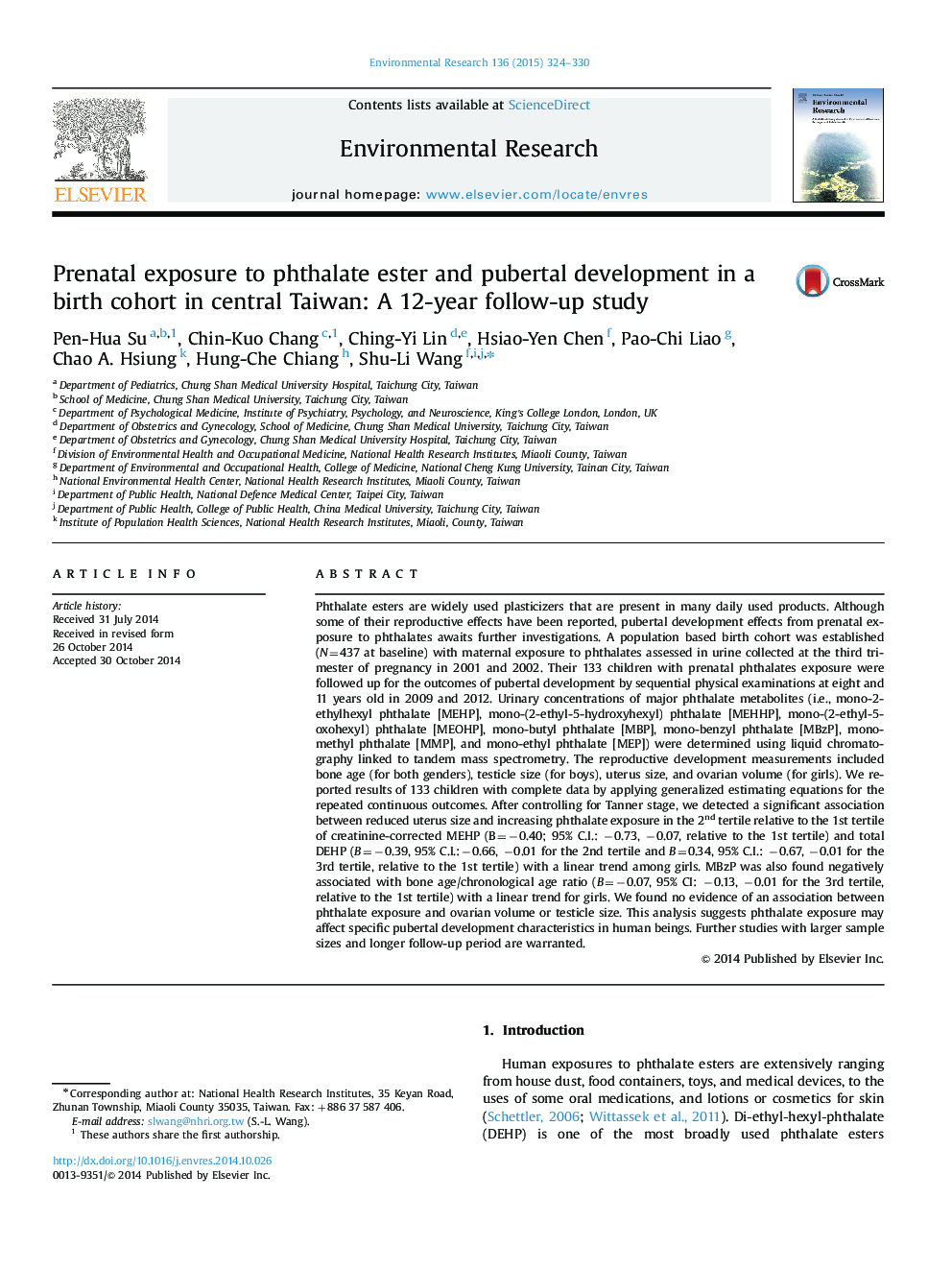| Article ID | Journal | Published Year | Pages | File Type |
|---|---|---|---|---|
| 6352378 | Environmental Research | 2015 | 7 Pages |
Abstract
Phthalate esters are widely used plasticizers that are present in many daily used products. Although some of their reproductive effects have been reported, pubertal development effects from prenatal exposure to phthalates awaits further investigations. A population based birth cohort was established (N=437 at baseline) with maternal exposure to phthalates assessed in urine collected at the third trimester of pregnancy in 2001 and 2002. Their 133 children with prenatal phthalates exposure were followed up for the outcomes of pubertal development by sequential physical examinations at eight and 11 years old in 2009 and 2012. Urinary concentrations of major phthalate metabolites (i.e., mono-2-ethylhexyl phthalate [MEHP], mono-(2-ethyl-5-hydroxyhexyl) phthalate [MEHHP], mono-(2-ethyl-5-oxohexyl) phthalate [MEOHP], mono-butyl phthalate [MBP], mono-benzyl phthalate [MBzP], monomethyl phthalate [MMP], and mono-ethyl phthalate [MEP]) were determined using liquid chromatography linked to tandem mass spectrometry. The reproductive development measurements included bone age (for both genders), testicle size (for boys), uterus size, and ovarian volume (for girls). We reported results of 133 children with complete data by applying generalized estimating equations for the repeated continuous outcomes. After controlling for Tanner stage, we detected a significant association between reduced uterus size and increasing phthalate exposure in the 2nd tertile relative to the 1st tertile of creatinine-corrected MEHP (B=â0.40; 95% C.I.: â0.73, â0.07, relative to the 1st tertile) and total DEHP (B=â0.39, 95% C.I.:â0.66, â0.01 for the 2nd tertile and B=0.34, 95% C.I.: â0.67, â0.01 for the 3rd tertile, relative to the 1st tertile) with a linear trend among girls. MBzP was also found negatively associated with bone age/chronological age ratio (B=â0.07, 95% CI: â0.13, â0.01 for the 3rd tertile, relative to the 1st tertile) with a linear trend for girls. We found no evidence of an association between phthalate exposure and ovarian volume or testicle size. This analysis suggests phthalate exposure may affect specific pubertal development characteristics in human beings. Further studies with larger sample sizes and longer follow-up period are warranted.
Related Topics
Life Sciences
Environmental Science
Health, Toxicology and Mutagenesis
Authors
Pen-Hua Su, Chin-Kuo Chang, Ching-Yi Lin, Hsiao-Yen Chen, Pao-Chi Liao, Chao A. Hsiung, Hung-Che Chiang, Shu-Li Wang,
